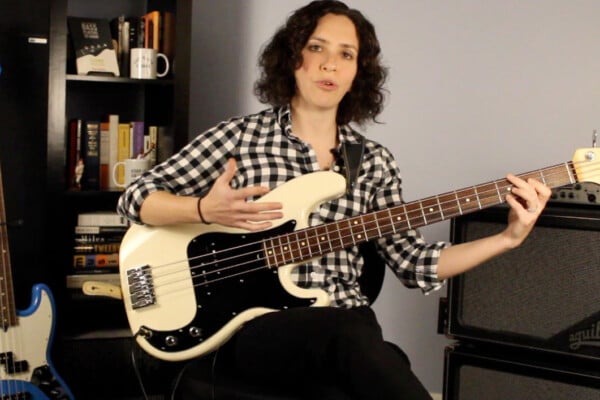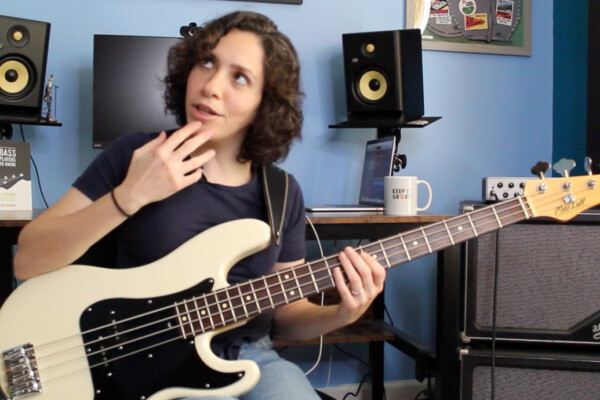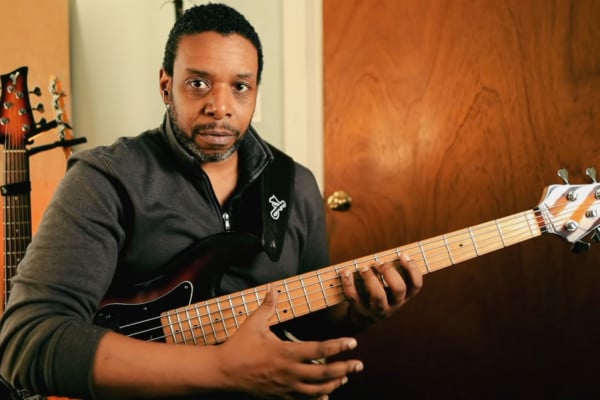Talking Technique: Efficient Practice Hacks #5: Mnemonics – Part 1
Harness the power of these creative time tested memory tools. They will enrich your bass playing and are useful for all walks of life.
A mnemonic is any idea or device that aids in remembering something. Maybe you are familiar with “Large Elephants Jump Slowly And Sink Rapidly” – helping US students remember the seven articles of the United States Constitution (Legislative, Executive, Judicial, Supremacy, Amendment, Statehood, Ratification). How about help to remember pi? “May I have a large container of coffee” – here the number of letters in each word corresponds with the digits of pi (= 3.1415927).
Memory masters remember strings of numbers or random objects by creating outrageously funny, silly or raunchy stories involving these objects. These images in their minds make the items stick. Moonwalking with Einstein by Josh Foer is a book that explores this subject matter in a delightful way if you’d like to go deeper.
Music presents ample opportunities for the use of mnemonics:
For example, the treble clef notes in the spaces between the staff lines spell the word FACE, whereas the bass clef spaces spell All Cows Eat Grass. Do you have a good one for the cycle of fifths or the sequence of sharps or flats? In German (my mother tongue) the left side of the cycle spells (translated): “Fresh boys eat roast beef for dessert”. And the sharp side tells “Ye old duck to go get fish”.
Do you have a good one, that is music related? Please share it in the comments, I’d love to hear it. All languages encouraged, even if the resulting mnemonic does not make any musical sense in English anymore!
Now on to bass.
Over the years I have come up with a variety of shortcuts and mnemonics for the bass.
Most are just plain useful little nuggets, particularly beginners, but anyone who is trying to understand the instrument a bit deeper may find them useful.
Here are a few examples:
Intervals:
- The “2×2” for example is one great way to finger an octave – two strings over, two frets over.
- The “2×1” then, is the fifth between two strings: one string over, two frets up.
- “One over” is the fourth – same fret, next string.
- The “1×1”, then, is the tritone – one string over, one fret over.
- Across the street – the minor seventh – same fret, but skip a string.
For beginners I purposefully use the term “over” with a slight nod of the head in the relevant direction because “up” and “down” can create its own set of problems, as some tend to think up/down in terms of space rather than sonically (musician speak) – and that can of course be exactly the opposite: going up the neck makes notes higher (on the same string at least) but I actually move my hand closer to the floor, so, down. Same with higher strings, you lower your fingers towards the floor but notes get – if I stay on the same fret – higher. In the photo I point towards notes going up (sonically). No wonder beginners can get confused for a minute!

Fingerings:
Mnemonics are also great for remembering fingerings and jump starting the memory of a shape (such as a scale or arpeggio):
- If it’s major – use the “traffic-finger” (one of those examples where something that’s a bit “outrageous” sticks). Major scales and arpeggios work great starting with the middle finger.
- If it’s minor – use the first finger. Minor scales and arpeggios need access to that minor third – easily granted by using finger number 1 for the root and finger number 4 on the same string for the minor third.
(For completeness’ sake: you could also use the pinky for either, or use extended fingerings).
Chord Changes:
For a I-VI-II-V progression – such as the one you would find in the beginning of a rhythm changes tune – I say: “Make an X”!
Watch this one minute video:
More mnemonics for bass and ears for you in the next installment of this mini-series. Please tune in!
In the meantime – what music themed mnemonics do you know? Please share in the comments!
Austrian-gone-Californian Ariane Cap is a bassist, educator, blogger and author. In her book Music Theory for the Bass Player and corresponding 20-week online course, she teaches music theory, bass technique, bass line creation and fretboard fitness in a systematic, practical and experiential way. She just released a brand new course on ear training for the bass player: Ear Confidence - 6 Paths to Fearless Ears. Contact her via her blog or website.




Can I just order the book and CD. I don’t have a computer?